Standard SVD rifle with polymer furniture.
By Vladimir Onokoy
Venerable Russian SVDM Sniper Rifle Nearing End of Service with Russian Forces
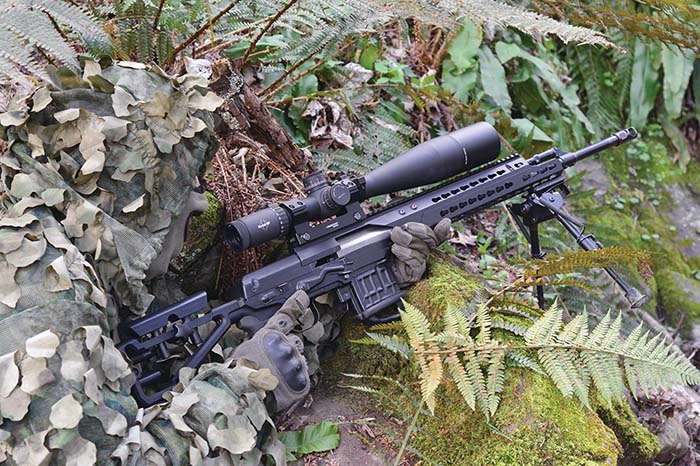
The semi-automatic Dragunov sniper rifle, originally called “SVD” (sniper rifle designed by Dragunov), is very well known all around the world. To this day, SVD remains the main DMR (Designated Marksman Rifle) in the Russian Army and in a number of ex-Soviet states.
Unfortunately, complete absence of imports to the U.S. and other Western countries created a certain information vacuum regarding new modifications of this venerable rifle, namely the SVDS and the latter Dragunov SVDM.
This article will try to showcase some of the features of the latest Dragunov variant, since, back in the day, this author was involved in some of the technical and military trials for this rifle.
The Original SVD Dragunov
The original SVD Dragunov is still in production in its original form; the only difference one can see right away is that the original wood stock and handguard are now made of black polymer.
The civilian version of SVD Dragunov is called “Tigr,” which means—you guessed it—”Tiger.” This rifle is in high demand and is very popular with Russian hunters and gun enthusiasts who want to own this piece of Soviet small arms history.
The main difference between the SVD and the Tigr is the barrel twist rate. The original twist rate of the SVD barrel is 1:12, which proved to be very effective with 7.62x54R sniper ammo but did not work well with tracers or armor-piercing rounds.
Around 1975, the Soviet military demanded that Dragunov rifles should be able to be effectively used with all types of ammo, and after some additional testing, the twist rate was changed to 1:9. It made overall accuracy slightly worse (some claim 25% worse), but hooray, now you can accurately shoot tracers out of your sniper rifle. Isn’t that what a sniper needs the most?
It should probably come as no surprise that some veteran Russian snipers prefer Dragunovs made before 1975. The good news is that civilian “Tigers” remained at the original 1:12 twist and can often be more accurate than military SVDs.
The SVDS
The next big thing was the SVDS, DMR rifle with a folding stock designed for Airborne troops.
SVDS, designed in 1991 and accepted into service in 1995, features a folding stock that folds to the right side of the weapon (and no, you cannot shoot with a folded stock) and a shorter barrel (22.2 inches) instead of 24.4 inches with the original SVD.
Everything else remained the same. On both the SVD and SVDM scopes are mounted via a side mount, and there is no easy way to use modern front-mounted night vision and thermal devices in conjunction with a day optic.
A number of private companies offered modernization kits for the SVD, the most notable being Sureshot Armament Group (sureshot-armament.com). They offer kits for both SVD and SVDS, and recently, their products gained considerable popularity with both civilians and military snipers.
However, before those updates became available, both the Russian military and Izhmash factory came to the realization that SVD in its original configuration has certain shortcomings that should be addressed.

First, it is not easy to mount a bipod on a Dragunov. Over the years, a number of bipods were developed for the SVD, but unfortunately, none of them caught on.
By the end of 2010, modern scopes such as Nightforce, SWAROVSKI and Schmidt&Bender became very prolific in the Russian Special Forces, and SVD shortcomings designed for side-mounted scopes became very apparent.
New Generations
That is why the Izhmash factory decided to develop a new version of the SVD with integrated bipod and Picatinny rail. The first prototype was demonstrated in 2012.
The final version of the rifle was ready in 2014. It featured a quick-detachable bipod, similar to the one used in the new version of the SV98 rifle, with railed receiver cover, folding stock and a very thick and heavy barrel.
Unlike previous generations of the Dragunov, SVDM features a gasblock that is combined with a front sight, the receiver cover with the Picatinny rail is hinged, and to open it, you have to rotate the lever in the back of the receiver downward. SVDM uses standard 10-round Dragunov magazines.
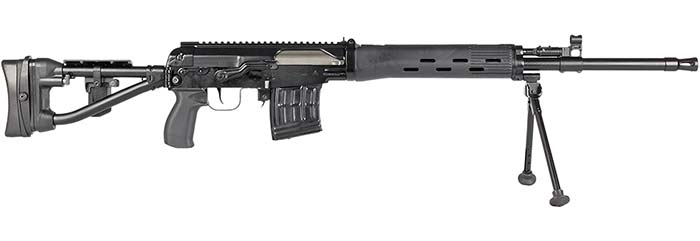
There is no official information about the users of the rifle, but as always, you can get a lot of information from the open sources. For example, SVDM was demonstrated during the Open Day of the 4th Guards Kantemirovskaya Tank Division.
Another sighting of SVDM was rather unexpected. To put things into perspective, imagine the most iconic view of Russia—Red Square. After looking at the photos, we can say that the SVDM is definitely used by the unit of Federal Protection Service that is similar to U.S. Secret Service Counter-Assault teams.
As for my personal impressions, I would say that SVDM is in an entirely different class compared to the regular SVD. A much heavier barrel and heavy optics make the SVDM less maneuverable and better suited for shooting from a static, well-prepared position. It is certainly too heavy for a classic DMR used on the squad level.
During technical trials, one thing that definitely needed improvement was the optic that came with the SVDM—the 1P88-4 variable power scope. I remember once, before a demonstration shoot, I grabbed the scope to mount it on the rifle and get on with zeroing. I opened the caps and wanted to check the quality of the glass, but to my surprise, I could not see the reticle.
The Russian military industrial complex is a close-knit community, and in a minute, I was dialing on my cell phone the number of the senior design engineer from the factory that made the scope. The conversation was rather short:
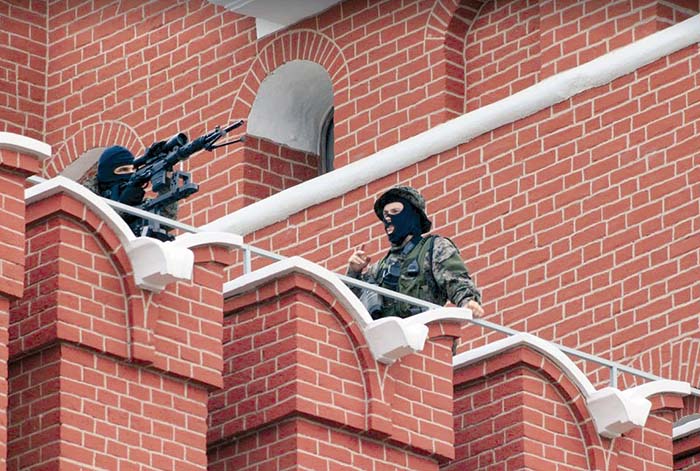
“Hello, buddy! I’ve got your scope, and I can’t see the reticle. Anything you can recommend?”
“Yes, that is actually quite normal! Just play with the magnification knob; eventually the reticle will be seen.”
“Thanks pal!”
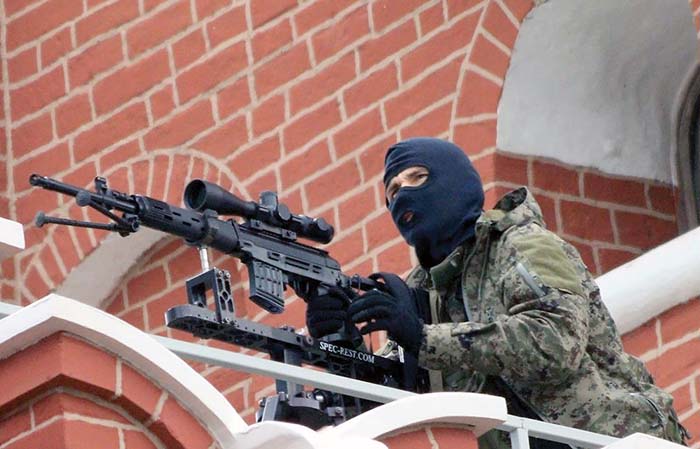
And he was right. When I got the scope to 12x magnification, the reticle suddenly appeared out of nowhere. “Well—I thought—it is true what they say, Russian scopes do actually have some very unique characteristics.” I am sure that since 2014, that scope has improved a lot.
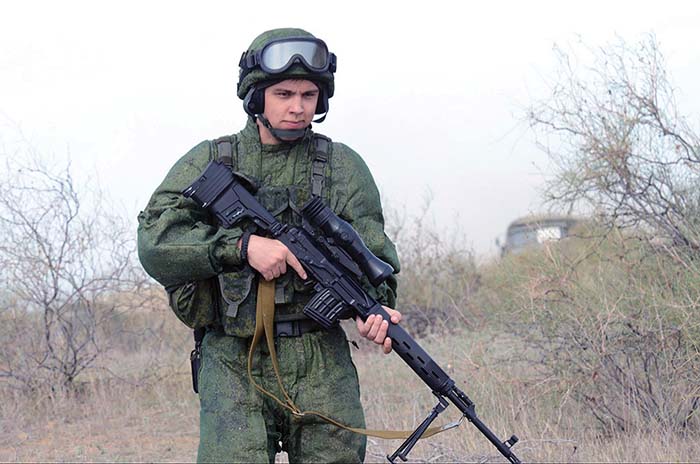
SVDM’s Last Stand?
For now, it looks like the SVDM will be the last iteration of the famous rifle. Its potential successor is the SVCh, a semi-automatic DMR designed by design engineer Chukavin from the Kalashnikov group. The SVCh is meant to slowly replace Dragunovs, first in the Russian Special Forces and later in the “Big Army.”
However, without any doubt, even if it happens, Dragunovs will remain popular in the conflict zones such as the Middle East in Africa for many years to come.
| This article first appeared in Small Arms Review V23N2 (February 2019) |











